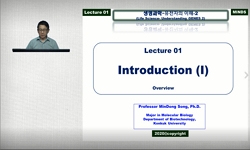<P><B>Objectives:</B></P><P>The transcriptional silencing of HIV type 1 (HIV-1) provirus in latently infected cells is a major hurdle on the pathway to HIV-1 elimination. The epigenetic mechanisms established by histone m...
http://chineseinput.net/에서 pinyin(병음)방식으로 중국어를 변환할 수 있습니다.
변환된 중국어를 복사하여 사용하시면 됩니다.
- 中文 을 입력하시려면 zhongwen을 입력하시고 space를누르시면됩니다.
- 北京 을 입력하시려면 beijing을 입력하시고 space를 누르시면 됩니다.
https://www.riss.kr/link?id=A107606892
- 저자
- 발행기관
- 학술지명
- 권호사항
-
발행연도
2014
-
작성언어
-
- 주제어
-
등재정보
SCI,SCIE,SCOPUS
-
자료형태
학술저널
-
수록면
1719-1728(10쪽)
- 제공처
-
0
상세조회 -
0
다운로드
부가정보
다국어 초록 (Multilingual Abstract)
<P><B>Objectives:</B></P><P>The transcriptional silencing of HIV type 1 (HIV-1) provirus in latently infected cells is a major hurdle on the pathway to HIV-1 elimination. The epigenetic mechanisms established by histone modifications may affect the transcriptional silencing of HIV-1 and viral latency. A systematic epigenome profiling could be applicable to develop new epigenetic diagnostic markers for detecting HIV-1 latency.</P><P><B>Design:</B></P><P>The HIV-1 latency cell lines (NCHA1, NCHA2 and ACH2] were compared with CD4<SUP>+</SUP> T-cell line (A3.01).</P><P><B>Methods:</B></P><P>The histone modification profiles obtained from chromatin immunoprecipiation followed by sequencing (ChIP-Seq) for histone H3K4me3 and H3K9ac were systematically examined and differential gene expression patterns along with levels of histone modifications were used for network analysis.</P><P><B>Results:</B></P><P>The HIV-1 latency gave rise to downregulation of histone H3K4me3 and H3K9ac levels in 387 and 493 regions and upregulation in 451 and 962 sites, respectively. By network analysis, five gene clusters were associated with downregulated histone modifications and six gene clusters came up with upregulated histone modifications. Integration of gene expression with epigenetic information revealed that the cell cycle regulatory genes such as <I>CDKN1A</I> (p21) and cyclin D2 (<I>CCND2</I>) identified by differentially modified histones might play an important role in maintaining the HIV-1 latency.</P><P><B>Conclusion:</B></P><P>The transcriptional regulation by epigenetic memory should play a key role in the evolution and maintenance of HIV-1 latency accompanied by modulation of signalling molecules in the host cells.</P>







 ScienceON
ScienceON




